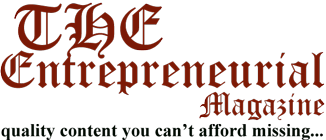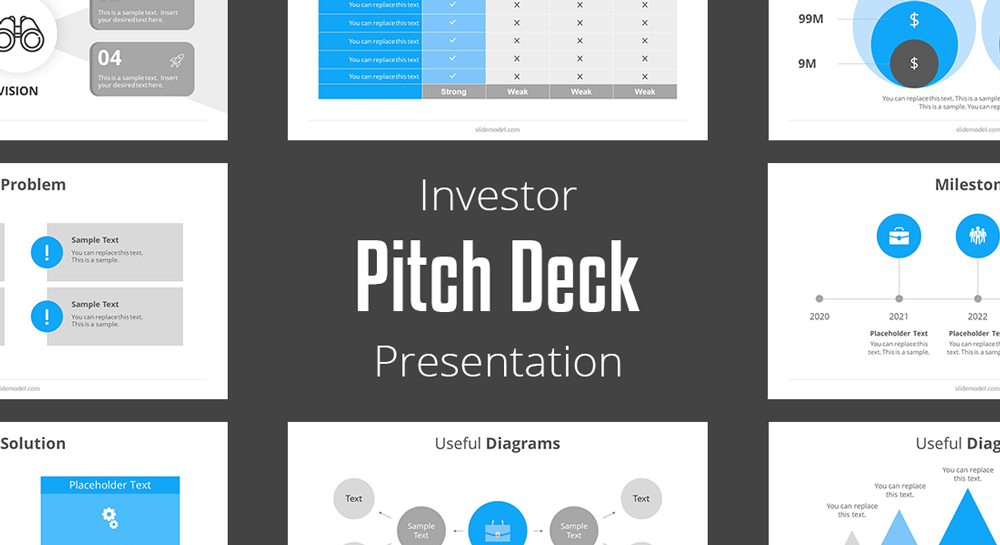It is the dream of many entrepreneurs to succeed in securing funding for their startup business, however, most of today’s entrepreneurs do not know the right tools to use for fundraising. A good percentage of startup entrepreneurs fail to fundraise mostly because they use business plans for fundraising. Every entrepreneur needs to have a proper distinction between a business plan and a business proposal. We normally use business proposals when seeking funding, except for specific businesses and projects, especially NGO grant applications.
The Purpose of the Pitch

- To maximize an opportunity at-hand
- To grab your audience’s attention and leave them wanting to know more
- To tell a story
- To share your passion for your business opportunity
- To share your personality
- To communicate the confidence you have in your business
- To set the stage for the all-important “ask”
Why use a business proposal instead of a business plan?
A business proposal also known as a pitch deck or investor presentation, is a summarized fundraising tools which is easy to read and understand. Pitch decks are generated using highly graphical information (infographics). Graphs and tables will do better and make it easier for one to present or even understand. Angel investors and venture capitalists receive millions of proposals each year, most of which are rejected for various reasons. This means the investors will have a lot of information to read. A business proposal may not be able make it under such circumstances since these people do not have time to read and get deeper into your business information, especially considering that all the figures will be based on assumptions. These are busy and lazy people who have no time to read at all. Business plans are monotonous. What does monotonous mean? It is a word that was derived from monotony, meaning mono-tone, one kind of a tone. A business plan displays this quality by the fact that is mainly composed of text. So no one will have the time to read your 20-page business plan that is based on assumptions.
What is a Business Proposal?
Itis a summarized infographic pitch used as a fundraising tool. It is usually generated using presentation software such as Microsoft PowerPoint, with a great deal of text, graphs, tables, chats and images.
What is a Business Plan?
It is a formal statement of what a business wants to accomplish and how it intends to accomplish it. A business plan includes a vision statement, which is a brief summary of the company’s goals. It also includes details of the products the company makes or intends to make, how it will sell them, and how much they will cost. A business plan nearly always includes a budget. Such plans are important to investors, who want to know how their money is supposed to be used, and to management to help keep a company on track.
Different Types of Pitches Used In Fundraising Endeavors by Entrepreneurs.
The Elevator Pitch
An “elevator pitch” is a short summary statement you make to deliver a compelling message about your product or service. It is delivered in the time it would take to complete an elevator ride (30 seconds -2 minutes).
The best recommendation is that you have various formats of your pitch handy (from 30 seconds to 10 minutes) because you’ll never know where you will be or how much time you will have when you meet that perfect person to pitch to.
The Video Pitch
It is highly recommended that you create a short video explaining the value of your business opportunity. Videos allow you to include music, images of your product, testimonials from your customers, and examples of how you can utilize this medium for communication. If you are posting your business plan and business pitch to an angel investor networking site, like Gust.com for example, adding a video pitch to your account will help you stand out from the crowd, as well as increase your likelihood of having your pitch viewed. It’s difficult to share your personality and passion in writing, so take advantage of video.
The One-Page Pitch
You would also need to know how to create a one-page pitch. This is a great example of how to share all of the compelling points about your business opportunity on a single page, and deliver it in a professional way. The components below match the information that an investor or lender would want to see in a business pitch. Remember, the purpose of the pitch is to grab your audience’s attention, so don’t dig too deeply into any specific area – there will be plenty of time for that in the due diligence process after you’ve wowed them with your amazing pitch!
The On-stage Pitch
If you are lucky enough to have the opportunity to pitch your business opportunity on stage, or in front of a group of investors, you’ll want to first and foremost know that you are now an “entertainer” on stage delivering a performance. By this, I mean that you are now not only delivering your business pitch, but you’re also entertaining your audience. Note: this is not Community Theater; you are going for a Tony Award. Just as an entertainer on stage needs to be concerned about his or her personal presentation (clothing, hairstyle, use of hand gestures, smiling, use of humor, etc.) and needs to stay on time and hold the audience’s attention, you too need to consider these elements to ensure a successful “on-stage” pitch.
SLIDES TO INCLUDE IN A PITCH DECK
- The Welcome Slide
The welcome page is the face of your business. You should bear in mind that people will always judge a book by its cover. First impressions last longer, so you should master the art of presentation. The welcome page should include the name of your company. Including a company motto/mantra/slogan is not bad.
Use visible colors and decent font types. Make sure your font size is at least 20 points.
- Problem worth Solving
Describe the major problem your potential customers are facing. Don’t try to solve many problems at once, one BIG problem can do better. You only have 140 characters to grab someone’s attention.
Our company is a startup business which provides state-of-the-art renewable power solutions.❌
About 1 billion people are living in wastes, an opportunity which can be turned into millions of dollars in revenue.✅
- The Proposed Solution
Describe the solution you offer to the potential customers. This is one of the trickiest slides most entrepreneurs fail to create well. Note the clear difference between stating a solution and stating a product. State the solution, not the product.
We have devised a machine which churns waste products and industrial affluence into edible products. ❌
Our technology allows communities to produce low-cost edible products from wastes to cater for the increasing demands for food.✅
- Market Validation
Support the validity and viability of business within the target market by providing clear facts and figures. Use information that include the rising demands, testimonials from other service providers. Provide links that firmly support your information.
- Market Size
State the market you are targeting. Most entrepreneurs have the problem of generalizing their target market. This data is derived through research and calculations, no other means. Find the global market size information from credible and reputable sources. That will be the total global market size. Calculate the serviceable available market. Determine you share of marketing and avoid overestimating the market share and penetration.
- Business Model
Highlight how you generate revenue. Avoid disclosing confidential information here. The example given below can guide you better.
We generate revenue by deducting a 10% commission on every successful transaction processed through our portal.
- Unique Selling Proposition
Highlight the most important features that make you outstanding. What differentiates your services from the rest?
- Competition
What other products and services or alternatives do your target customers use? Know your competitors well. Most entrepreneurs have the tendency of lying that they do not have any competitors. There is no business without competition. You have to note that there are two types of competitors;
- Direct Competitors
Those who offer the same products and services as your business. A good example is the relationship between Intercape and Greyhound. These companies both offer luxury coach services.
- Indirect Competitors
Those who offer alternative products and services that fulfil the same purpose. A good example is the competition between City Link and Air Zimbabwe. They offer different services that fulfil the same purpose.
So no matter how novelty your idea is, there is no business without competition. Even space mining companies suffer from the competition imposed by terrestrial mining companies. Elon Musk’s Hyperloop also suffers great competition from alternative-service providers that provide cheaper services that are easier to implement, accompanied by mow maintenance costs.
- Competitive Edge/Competitive Advantages
Highlight the advantages of your services compared to those offered by your main competitors. Don’t explain much about the novelty of your idea, most angel investors and venture capitalists do not understand anything about technology. What they understand is anything related to facts and figures.
Avoid writing statements. You will only do that when invited to present a full business plan. List the features. Good example of features to list are given below;
- New to market (first mover advantage)
- Design and brand (unique design and brand)
- Accessibility (accessible from any geographical location at any given time)
- Accessibility (accessibility features for the handicapped and blind)
- Profiles (create personal or corporate profiles)
- Ease of Use (search by product, location or price)
- Quick (24/7 real-time service access)
- Secure (end-to-end encryption, no third parties involved)
- Financials
Provide some projections. The projections have to be accompanied by reasonable justifications. Most businesses take time to mature and fully penetrate the markets. Provide clear facts and figures, for example the US$2,000,000.00 profit realized in Year 3 Q4 is based on the assumption of having successfully closed 1,000,000,000 successful transactions worth an average of US$500.00.
Use tables and graphs and or pie charts. Graphs work best!
- Funding
Your full business plan will include the details behind your topline numbers, but for the sake of your pitch, it’s okay to just share your topline revenue, expenses, and profits. Ask for money. Most entrepreneurs forget this part. Highlight how much is needed and for what purpose. Normally a range will do better than just a fixed amount and angel investors usually provide a maximum of pre-seed or seed funding US$250,000.00-350,000.00 (for about 8%), while venture capitalists provide a seed funding of at most US$500,000.00 (for about 10%), and up to US$750,000.00 or even just over a million, but in VERY rare circumstances, unless the business is not a technology based one. Other sectors such as mining, farming and transport may have different terms. The percentage offered to investors is usually derived from pre-valuation of the company, which usually does not exceed US$4,000,000.00. While it is very difficult to calculate or estimate, investors usually take a reasonable amount, which will leave you in control of the business after successive fundraising endeavors such as Series A and Series B funding.
Highlight the security option you have, be it equity or convertible note amongst other security options. State the percentage. Also highlight the intended exit strategy. We have initial public offer (IPO), sale to another company and buyback amongst other companies. Buyback is very rare, so try to more realistic options.
We are raising US$450,000.00-500,000.00 for 10% via convertible note.
The Ask
- Seed funding
- Incubation
- Discount on Series a funding
Security
- 10% via convertible note
Use of the Proceeds
- Early marketing efforts
- Research and Development
Investor Exit Strategy
- Sale (state potential customers who are within the same line of business) or IPO
- The Team
Provide profiles for the key members. Provide clear and progression headshots, and include names, positions and backgrounds. Do not overdo it when introducing your team members. Of course investors invest first in people, the business models, but it is not the level of qualifications that will grab the attention of the panel. On a sad note, you have to understand and accept the harsh fact that most highly experienced venture capitalists usually prefer college dropouts, a fact which can be proven by studying the demographics of success entrepreneurs like William Henry Gates III (a.k.a. Bill Gates), Mark Zuckerberg and the late Steven Paul Jobs (a.k.a. Steve Jobs). Experience and past achievements may attract the attention better than mere qualifications with no notable traction.
- Summary
Summaries your pitch deck in just a few sentences. Bolden the key words and phrases, highlighting them with a different font color. A good example is given below
- Big Opportunity: First mover advantage in the xxxxx market.
- Strong Team: Hardworking, dedicated team with deep innovation expertise.
- Big Geographical Footprint: Accessible from any geographical location at any given time.
- Elevator Pitch
First impressions last longer, but the human brain always stick to the final moments. While it is difficult for investors to recall all the slides of the pitch deck, this last slide will give them the summarized version of all the slides. This is your chance to grab their attention once more.
An example has been given below;
Company X is the ”World Bank for civil servants in location X”. Our services allow civil servants to access low-interest loans form accredited moneylenders that include companies Y and Z.
We are initially targeting the ZW$/US$/GB£/ZAR (Amount) (geographical coverage) market for accredited civil servants moneylenders.
We acquire customers primarily through (highlight your marketing campaign channels) and we get a (figure) x (e.g., 3x) return on our customer acquisition cost.
We have an experienced team with (qualities) and (experience), and, a first mover advantage.
- Thank You
Provide valid contact details that include the following;
Website
Email contacts
Use a professional format e.g., info@company.com, or company@domain.com if you do not have a company domain. If you are using your personal account, make sure the address is professional, e.g. name.surname@domain.com. Avoiding using unprofessional addresses like hotgirl.03@domain.com. Also avoid using domains that are well known for scams. Do not send a single mail to multiple accounts or forward sent proposals as it will prove lack of confidence with the moneylender.
Phone contacts
Use a professional phone number format, the correct format for a Zimbabwean number (Econet, Telecel and NetOne) is +263-77-123-4567), not the popular +263-771-234-567. Professionals will always consider that.
Social Media Profiles:
Though you may add social media links for further acquaintance with the specifics and background of the business, avoid chatting with investors and other professionals using social media platforms. Only use this at their own discretion, and make sure all your posts are relevant. Avoid hiding status updates and last seen as this may trigger some trust issues with the contact persons. Also avoid using shorthand and unprofessional language, and unnecessary multimedia posts. Avoid too many and unnecessary chats. Be quick to respond, but don’t be so obsessed with social media to such an extent that they will come to believe that you spend much of your time on social media.
Company address
Other slides
You may also add the following slides, but remember to keep the pitch deck short and precise.
Milestones
In the investor world, “traction” is a frequently used term. You may be asked by investors, “tell us about your traction.” What they were asking is “what milestones have you achieved so far in your business?” You would not want to only mention what you have already achieved, but also what other milestones you are striving to achieve and include dates.
Don’t be afraid to share your success.
Examples of milestones to share include;
- Signing a lease for a building
- Purchasing key equipment
- Securing your first customer
- Raising money or securing a bank loan
- A signed letter of intent (LOI) form a customer
- A media mention
- Results achieved from your marketing activities
Partners and Resources
Your team extends beyond your four walls.
The “Partners and Resources” section is where you feature any other organizations that are, or will, contribute to the success of your business. Examples include:
- Vendors
- Suppliers
- Bankers
- Accountants
- Distributors
- Lawyers







